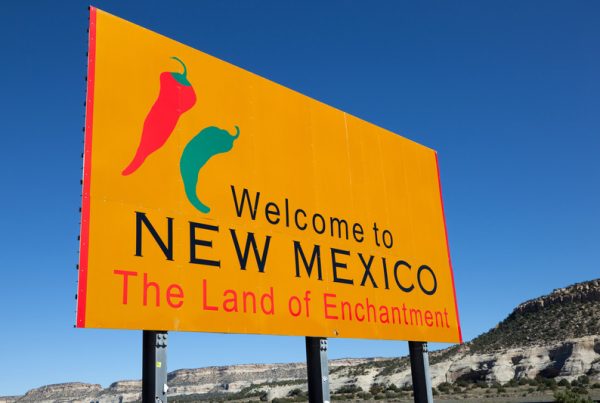Generation Z is redefining many norms, and driving is no exception. The trend of obtaining a driver’s license, once a rite of passage at sixteen, is diminishing among young people. The reasons for this delay are multifaceted. Unlike previous generations, today’s youth face different social and economic realities. The rise of urbanization has decreased the necessity for personal vehicles. In densely populated cities, public transit offers a practical and economical alternative. Furthermore, the surge of online communication reduces the need for physical travel.
Technology has also contributed to this phenomenon. With the internet, social interactions and work can be managed virtually, lessening the reliance on personal transportation. Additionally, the environmental consciousness prevalent among Gen Z plays a crucial role. Many young people are aware of the negative impacts of car emissions on climate change. They prefer to reduce their carbon footprint by avoiding car ownership. This generational shift reflects a broader trend toward sustainability and minimalism.
Economic factors cannot be overlooked. The cost of car ownership has increased significantly, including expenses for insurance, maintenance, and fuel. Student debt and high living costs further strain young adults’ finances. Many find it more practical to postpone getting a driver’s license. Some also cite the complexity of modern driving tests as a deterrent. The increased emphasis on road safety has made the licensing process more rigorous, adding to the hesitation.
Despite these challenges, some young people still pursue driving. However, they often do so later than their predecessors. They prioritize education and career over immediate car ownership. This delayed entry into the driving world has implications for the automotive industry. It influences car sales, insurance, and even urban planning.
Driving schools are adapting to these changes. They are offering more flexible and affordable programs to attract young learners. The goal is to make driving education accessible despite financial and environmental concerns. These schools play a vital role in ensuring that even reluctant drivers are well-prepared for the road.
The Influence of Social Media
Social media has a profound impact on Generation Z’s attitudes and behaviors, including their views on driving. Platforms like Instagram, Snapchat, and TikTok are influential in shaping their perceptions. They provide a space for young people to share their experiences and opinions about driving. This digital interaction often emphasizes the downsides of car ownership.
Many influencers highlight the financial burden and environmental impact of owning a car. These messages resonate with eco-conscious Gen Zers. Social media also offers alternatives, showcasing the benefits of biking, public transit, and ride-sharing. The convenience and cost-effectiveness of these options are appealing. Young people are more likely to adopt these practices after seeing them endorsed online.
Moreover, social media fosters a sense of community around sustainable transportation. Groups and hashtags dedicated to biking or public transit tips create a supportive network. This community aspect encourages young people to explore and commit to these alternatives. The influence of peers and influencers cannot be understated.
Another significant factor is the portrayal of driving in media. Many young people associate car ownership with stress and responsibility. They see posts about traffic jams, accidents, and the high costs of maintenance. These negative portrayals contribute to the decision to delay or forgo driving.
Social media also impacts driving behavior. Apps like Waze and Google Maps are popular for navigation, promoting efficient and safe driving. However, the constant connectivity can be a distraction. There’s a growing concern about the role of smartphones in road safety. Despite these risks, young drivers are generally tech-savvy and quick to adapt to new driving aids.
Driving schools are recognizing the power of social media. They use these platforms for marketing and engagement. Innovative programs that incorporate social media elements appeal to tech-oriented Gen Z learners. Schools are also leveraging virtual reality to enhance driver training. By harnessing virtual reality for driver training, they create immersive and interactive learning experiences. This approach aligns with the preferences of a digitally native generation.
The Rise of Alternative Transportation
Generation Z is at the forefront of a transportation revolution. The popularity of public transit, biking, and ride-sharing is on the rise. Young people are increasingly opting for these modes over traditional car ownership. This shift is driven by several factors.
Firstly, urbanization has made alternative transportation more accessible. Many cities have invested in robust public transit systems. Buses, trains, and subways offer a reliable and cost-effective way to commute. Biking infrastructure has also improved, with dedicated lanes and bike-sharing programs. These developments make it easier for young people to choose these options.
Ride-sharing services like Uber and Lyft are particularly popular. They offer convenience without the long-term costs of car ownership. These services are also integrating sustainable options, like electric vehicles. The flexibility and affordability of ride-sharing appeal to budget-conscious Gen Zers.
Environmental concerns are a significant motivator. Many young people are committed to reducing their carbon footprint. Public transit and biking are seen as eco-friendly alternatives. The growing awareness of climate change influences their transportation choices.
Economic factors play a role as well. The high costs of cars, insurance, and fuel are deterrents. Many young adults prefer to invest their money in education or experiences rather than vehicles. This pragmatic approach aligns with the broader trend of minimalism.
The impact of this shift is significant. It affects urban planning, transportation policies, and the automotive industry. Cities are adapting by expanding public transit and bike-friendly infrastructure. The demand for ride-sharing services is also driving innovation.
Driving schools are responding to these trends. They are incorporating lessons on safe biking and public transit use into their programs. The goal is to provide comprehensive transportation education. This approach prepares young people for a future where multi-modal transportation is the norm.
Environmental Concerns and Car Ownership
Environmental consciousness is a defining characteristic of Generation Z. This awareness significantly influences their attitudes toward car ownership. Young people are keenly aware of the environmental impact of vehicles. They are motivated to make choices that reduce their carbon footprint.
Many Gen Zers prefer alternative transportation modes for this reason. Public transit, biking, and ride-sharing are seen as eco-friendly options. The reduced emissions from these modes align with their environmental values.
Electric vehicles (EVs) are also gaining traction among young people. They are viewed as a sustainable alternative to traditional cars. However, the high upfront cost of EVs can be a barrier. Many young adults are still in the early stages of their careers and cannot afford such investments.
Car sharing is another popular option. It allows young people to use a vehicle without the long-term commitment. This model is both cost-effective and environmentally friendly. It reduces the number of cars on the road, lowering overall emissions.
Climate change awareness also influences daily driving habits. Young drivers are more likely to adopt fuel-efficient driving practices. They are conscious of their driving behavior and its environmental impact. This includes reducing idling time, maintaining steady speeds, and proper vehicle maintenance.
Driving schools are adapting to these environmental concerns. They are incorporating eco-friendly driving practices into their curriculum. Lessons on fuel efficiency and car maintenance are becoming standard. These schools aim to educate young drivers on sustainable driving habits.
The insurance industry is also evolving. Products like Commercial Auto Insurance for Driving Schools are becoming more popular. These policies cater to the specific needs of environmentally conscious driving schools. They offer coverage for eco-friendly practices and vehicles.
Financial Barriers to Driving
Financial barriers are a significant factor in Generation Z’s driving habits. The costs associated with car ownership are often prohibitive. Many young people are burdened by student debt and high living expenses. These financial pressures make it difficult to afford a car.
The initial cost of purchasing a vehicle is a major hurdle. New cars are expensive, and even used cars require a significant investment. This is compounded by the costs of insurance, maintenance, and fuel. For many young adults, these expenses are not feasible.
Insurance is a particularly challenging expense. Young drivers are often considered high-risk, leading to higher premiums. This financial burden deters many from pursuing car ownership. Innovative insurance products are emerging to address these challenges. Policies like Driving School Business Insurance offer tailored coverage options. They cater to the unique needs of young drivers and driving schools.
Maintenance costs are another significant concern. Regular upkeep is essential for safety and efficiency, but it can be expensive. Young people often prioritize other financial commitments over car maintenance. This can lead to safety issues and increased long-term costs.
Fuel prices are also a deterrent. The volatility of fuel prices makes budgeting difficult. Many young people prefer to use public transit or biking to avoid these costs. The rise of electric vehicles offers a potential solution, but the high upfront cost remains a barrier.
Driving schools are adapting to these financial challenges. They are offering more affordable and flexible payment options. The goal is to make driving education accessible despite financial constraints. These schools play a crucial role in preparing young drivers for the road.
Economic realities are shaping the future of transportation. The automotive industry is adapting to these changes. There is a growing focus on affordable and sustainable transportation options. This includes the development of affordable electric vehicles and car-sharing programs. The insurance industry is also evolving to meet the needs of young drivers. Policies like Business Owners Insurance offer comprehensive coverage for driving schools. They address the unique challenges faced by young drivers and driving schools.
The Role of Driving Schools in Engaging Gen Z
Driving schools play a pivotal role in engaging Generation Z. They are adapting their approaches to meet the unique needs and preferences of young learners. Innovative programs and technologies are being implemented to attract and retain students.
One of the key strategies is the use of technology. Many driving schools are harnessing virtual reality for driver training. VR provides an immersive and interactive learning experience. It allows students to practice driving in a safe and controlled environment. This approach aligns with the digital preferences of Gen Z.
Driving schools are also leveraging social media for engagement. Platforms like Instagram, Snapchat, and TikTok are used for marketing and communication. These platforms allow schools to connect with students in a familiar and accessible way. Social media campaigns can showcase the benefits of driving education and address common concerns.
Flexible scheduling is another important factor. Many young people have busy schedules with work, school, and social commitments. Driving schools are offering more flexible class times and online learning options. This makes it easier for students to fit driving education into their lives.
Affordability is a significant consideration. Many driving schools are offering discounts and payment plans to make their programs more accessible. This approach addresses the financial barriers that many young people face.
Driving schools are also focusing on comprehensive education. They are incorporating lessons on safe biking, public transit use, and eco-friendly driving. This holistic approach prepares students for a multi-modal transportation future.
The insurance industry supports these innovative approaches. Policies like School Liability Insurance provide coverage for driving schools. They address the unique risks associated with modern driving education.
Preparing Young Drivers for the Future
Preparing Generation Z for the future of driving involves addressing unique challenges and opportunities. Driving schools and educators play a crucial role in this process. They must equip young drivers with the skills and knowledge needed for a changing transportation landscape.
One of the key challenges is the integration of technology. Modern vehicles are equipped with advanced safety features and autonomous driving capabilities. Young drivers must be trained to use these technologies effectively. Driving schools are incorporating lessons on technology use and safety. This includes training on how to use advanced driver-assistance systems (ADAS).
Another important aspect is environmental consciousness. Young drivers must be educated on eco-friendly driving practices. This includes lessons on fuel efficiency, car maintenance, and the benefits of alternative transportation. Driving schools are incorporating these topics into their curriculum.
Financial literacy is also crucial. Young drivers need to understand the costs associated with car ownership. This includes insurance, maintenance, and fuel expenses. Driving schools are offering financial education as part of their programs. This helps students make informed decisions about car ownership and budgeting.
Safety is always a top priority. Driving schools are emphasizing safe driving practices and defensive driving techniques. They are also incorporating lessons on distracted driving and the risks of smartphone use.
The insurance industry plays a supportive role. Policies like Trade School Workers Compensation Insurance provide coverage for driving schools. They address the unique risks associated with driver training. This support enables schools to focus on delivering high-quality education.
Driving schools are also addressing the emotional and motivational aspects of driving. Many young people experience anxiety about driving. Schools are providing support and encouragement to build confidence. They use positive reinforcement and personalized instruction to motivate students.
Finally, driving schools are preparing students for a future where multi-modal transportation is the norm. They are teaching young drivers to navigate public transit, biking, and ride-sharing. This comprehensive approach ensures that students are prepared for all transportation options.
Adapting Driving Education for Generation Z
Generation Z is redefining the landscape of driving. Their attitudes and behaviors are shaped by economic realities, environmental concerns, and technological advancements. The delayed license phenomenon reflects broader social and financial trends. Social media and alternative transportation options are influencing their choices. Environmental consciousness and financial barriers play significant roles in their driving decisions.
Driving schools are adapting to these changes with innovative approaches. They are leveraging technology, social media, and flexible programs to engage young learners. Comprehensive education and financial literacy are crucial components of modern driving education. The insurance industry supports these efforts with tailored coverage options.
Preparing young drivers for the future involves addressing unique challenges and opportunities. Driving schools are at the forefront of this effort. They are equipping Generation Z with the skills and knowledge needed for a changing transportation landscape. By embracing these innovations and addressing the concerns of young people, driving schools are ensuring that the next generation is ready for the road ahead.












